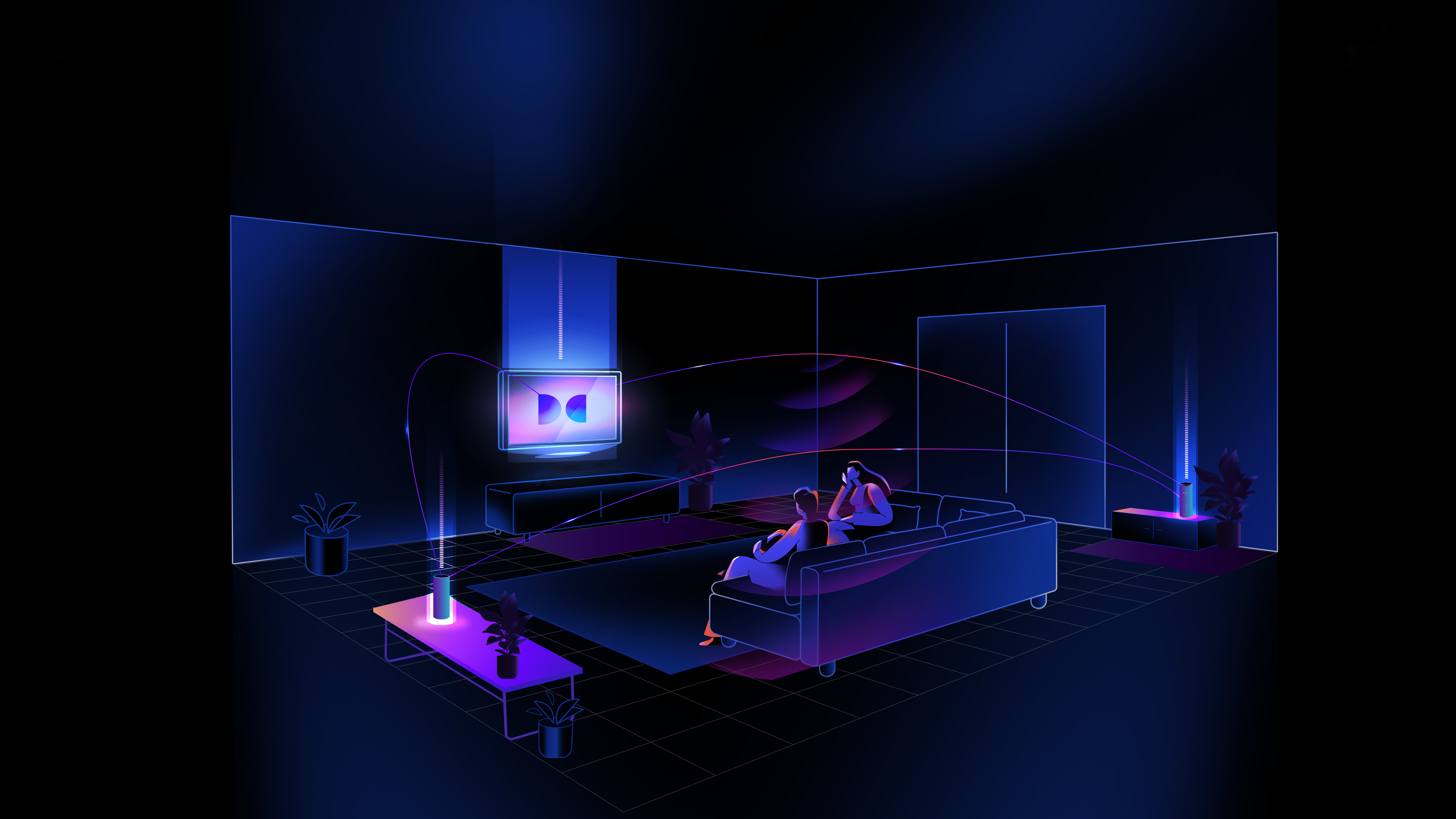Next-generation Dolby Atmos FlexConnect wants to kill the soundbar
The new sound tech is set to debut on TCL TVs in 2024 – here’s what we know so far

Dolby has unveiled new “FlexConnect” technology, designed to let TVs offer Atmos surround sound experiences wirelessly.
The FlexConnect tech was unveiled ahead of the IFA 2023 trade show in Berlin. It aims to let TVs connect to compatible wireless speakers and accessories to offer Dolby Atmos surround sound experiences without the need for complex placements or the need to run cables through the room.
Dolby claims the FlexConnect tech will work with various speakers, and theoretically remove the need to invest in a soundbar as the TV’s speakers will act as the central channel.
As an added perk, Dolby claims FlexConnect can “intelligently” create authentic Atmos experiences regardless of where the satellite speakers are placed in the room. This is, apparently, done using “dynamic audio balancing” which scans the room and optimises its sound based on the speakers’ location and capabilities.
The approach is a big departure from the traditional set-ups we’ve reviewed in the past, which require a soundbar as the central channel, or full speaker package with fairly specific placements to create an authentic “dome of sound” Dolby Atmos experience.
John Couling, Senior Vice President, Entertainment at Dolby Laboratories, said the company designed FlexConnect in a bid to make Atmos more accessible to users who don’t want to compromise their room’s feng shui to get solid audio quality.
“Consumers shouldn’t have to move their furniture to experience better audio, but rather audio should adapt to them,” he said.
The latest hi-fi, home cinema and tech news, reviews, buying advice and deals, direct to your inbox.
“Dolby Atmos FlexConnect is an entirely new category of experience that offers consumers the freedom and flexibility to choose how they want to arrange their devices while still getting a great immersive Dolby Atmos experience.”
It’s currently unclear what technical requirements the new tech has, though Dolby has confirmed TCL as its launch partner, promising the first FlexConnect sets and speakers will arrive at an unspecified point next year. The only other technical detail we have is that the first batch of TVs will run on MediaTek’s Pentonic Smart TV series chipset.
The tech sounds very interesting, and we’ll be excited to see how it runs when we get the first batch of sets with FlexConnect in for testing next year. Our only minor concern is that, traditionally, we’ve found TVs’ inbuilt speaker systems aren’t capable of matching even a basic soundbar’s performance.
If you look at our best TV guide, you’ll see “poor audio quality” is a general criticism we give to many sets, including top performers like the LG G3 and Samsung S95C.
We’ll be curious to see if Dolby’s smart tuning solution manages to get around this and if any compatible TVs manage to deliver the same level of performance we experience on the best Dolby Atmos soundbars we've tested as a result.
MORE:
These are the best soundbars we've tried and tested
Check out our picks of the best home cinema systems
Confused about how to place speakers? Our hand guide has you covered

Alastair is What Hi-Fi?’s editor in chief. He has well over a decade’s experience as a journalist working in both B2C and B2B press. During this time he’s covered everything from the launch of the first Amazon Echo to government cyber security policy. Prior to joining What Hi-Fi? he served as Trusted Reviews’ editor-in-chief. Outside of tech, he has a Masters from King’s College London in Ethics and the Philosophy of Religion, is an enthusiastic, but untalented, guitar player and runs a webcomic in his spare time.
